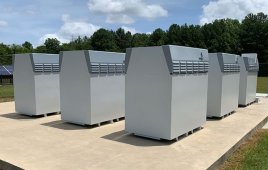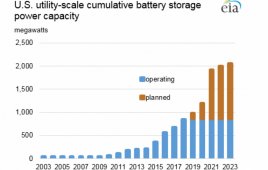This article comes from Nelson Mullins Riley & Scarborough LLP and is authored by Weston Adams, III, Joseph W. Eason, Lawrence L. Ostema, and Steven Shparber.
On January 26, 2018, Texas regulators at the PUC voted to dismiss a proceeding through which AEP hoped to install several grid-scale batteries, including a 500-kilowatt battery to supplement a distribution substation and a 1-MW battery that could help if a key distribution line is out. AEP sought confirmation that its proposal complied with Texas law and that the assets would be eligible for being part of the company’s distribution cost of service, and while their petition was dismissed without prejudice, the Texas PUC voted to create a rulemaking proceeding to look more generally at the role of battery storage.
In the short term, this means that AEP cannot move forward with its proposed battery system, which at a cost of approximately $2.3 million, was substantially less than AEP’s $11.3 million to $22.5 million estimate of what it would cost for traditional upgrades. And while Texas PUC members applauded AEP for making the proposal, the PUC stated that it did not have sufficient information to approve AEP’s application. However, a full discussion of issues related to battery storage will be encouraged in a future rulemaking proceeding, including how to treat the energy consumed by storage technology under current market rules, and whether a utility needs to obtain approval for the use of non-traditional storage technologies, even on the distribution grid.
These issues highlight the difficulty with fitting energy storage, which is a potentially game-changing technology for the electric industry with multiple uses, into a regulatory paradigm which generally has strict boundaries classifying how different resources are used. Breaking down these boundaries while protecting consumers and ensuring fair market outcomes will be an important task for regulators to tackle as they consider energy storage’s role going forward.
Filed Under: Energy storage





